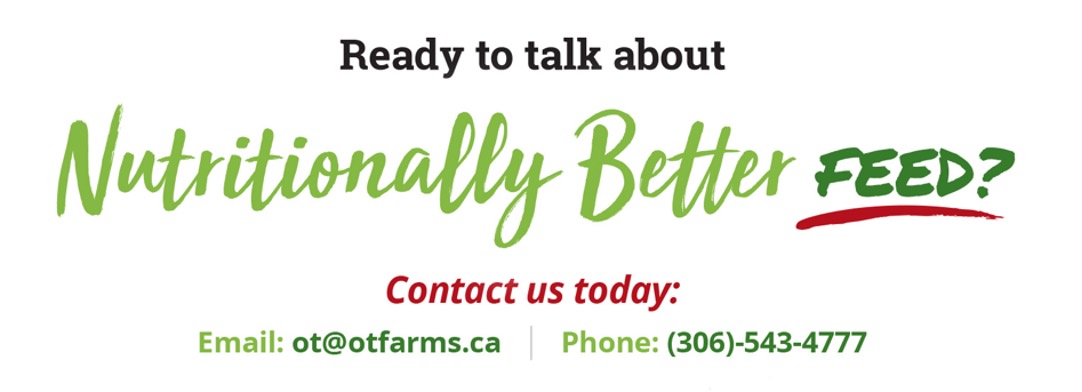OPTIMIZING NUTRITIONAL BALANCE
The global events of the past year have dramatically changed consumer awareness to health, immunity and nutrition. Consumers have become more health conscious and are seeking nutritionally better foods (ie. Omega-3 enriched, immunity related products). Information transparency is now an essential attribute for any product, and the availability of digital information ensures no one cuts corners. The origin of products and their grow-out attributes (ie. cage-free) are more important than ever before.
2021 presents a continued opportunity for both the livestock and food industries to innovate and provide healthier products (promote immunity) that will meet the transparency consumers expect.
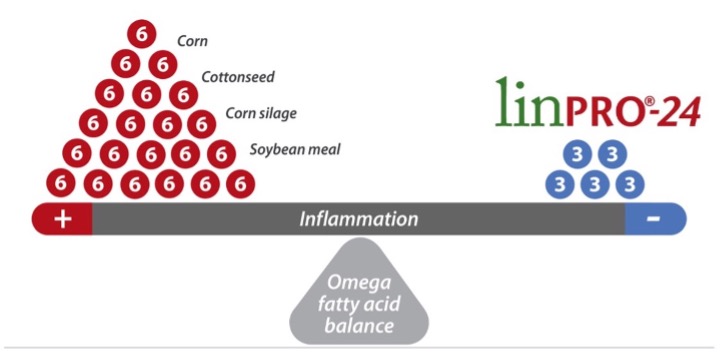
Omega-6 dietary overload: what is the domino effect?
 The livestock feeding strategies of the preceding 50 years are characterized with high energy, saturated fat, omega-6 fatty acids, trans-fatty acids, and all with a corresponding low amount of omega-3 fatty acid intake. This feeding strategy provides a ω-6: ω-3 ratio, that is approximately 12:1 for livestock.
The livestock feeding strategies of the preceding 50 years are characterized with high energy, saturated fat, omega-6 fatty acids, trans-fatty acids, and all with a corresponding low amount of omega-3 fatty acid intake. This feeding strategy provides a ω-6: ω-3 ratio, that is approximately 12:1 for livestock.
Correspondingly, for humans the ω-6: ω-3 ratio is even higher and is now approximately 25:1. This is in stark contrast to the ratio recommended by the World Health Organization of 4:1 for humans.
The dietary fatty acid imbalance has harmful effects on livestock performance (immune depression, loss of productivity and compromised reproduction). The same fat imbalance that exists for humans is responsible for higher incidences of cardiovascular diseases, cancer and auto-immune diseases. The cause and effect of the dietary imbalance between the w-6: w-3 ratio, is similiar to the chain reaction we see with falling dominoes. This domino effect starts with how we feed our livestock and progresses through to the functional foods we eat as humans.
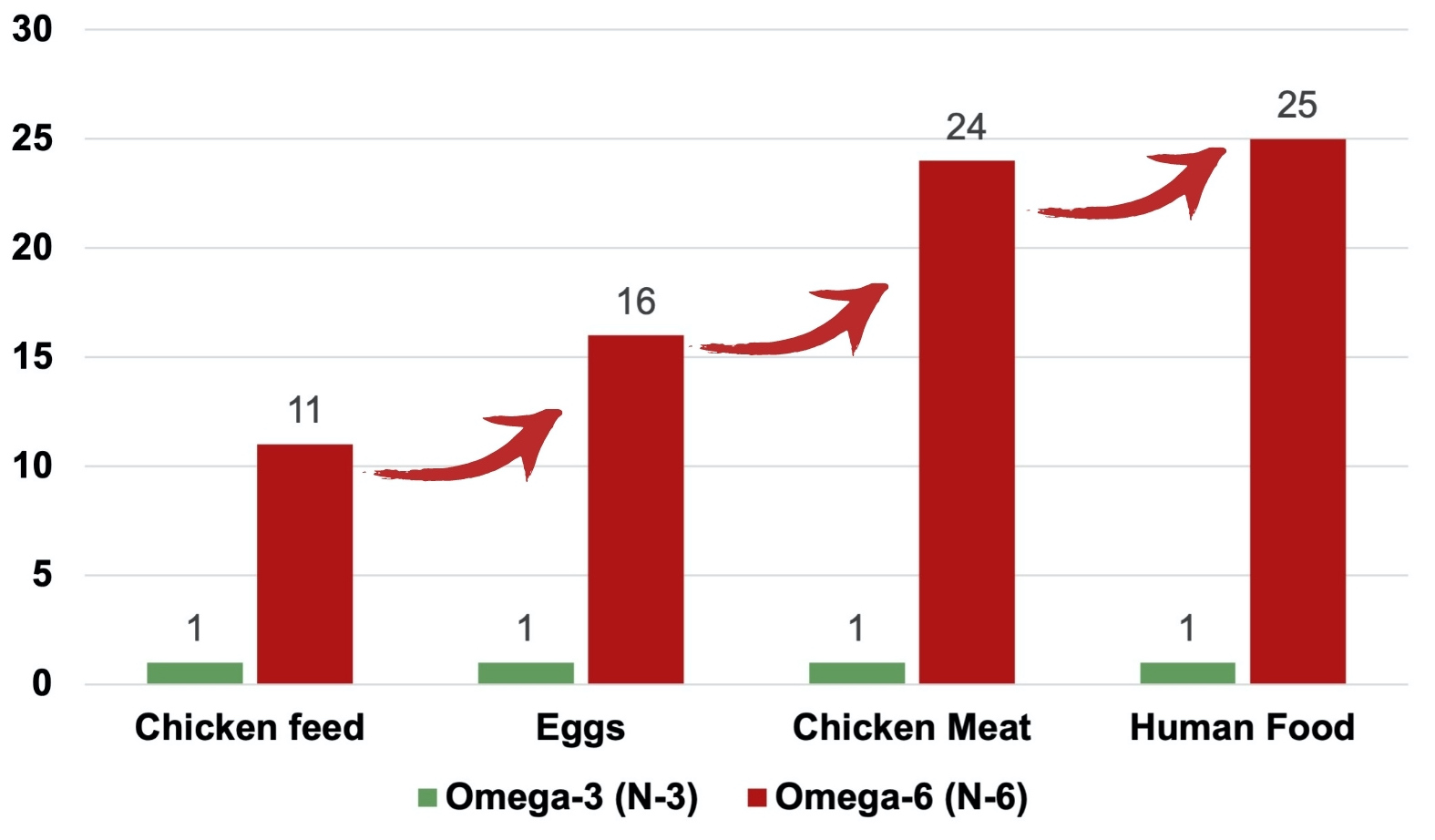
Overview of the health implications of ω-6:ω-3 dietary ratio
In 1929 the husband-and-wife team of George and Mildred Burr (University of Minnesota) discovered the importance that fatty acids mean to our health. Their research identified fatty acids being an important component of dietary balance; ultimately leading to the term “essential fatty acids” (EFAs). They established the importance of a balanced ω-6:ω-3 dietary fat ratio. Unfortunately, their research findings did not progress much further for nearly seventy (70) years, as the scientific information was seldom discussed nor understood. Fast forward to 2000 and essential fatty acids remerged as an important dietary topic.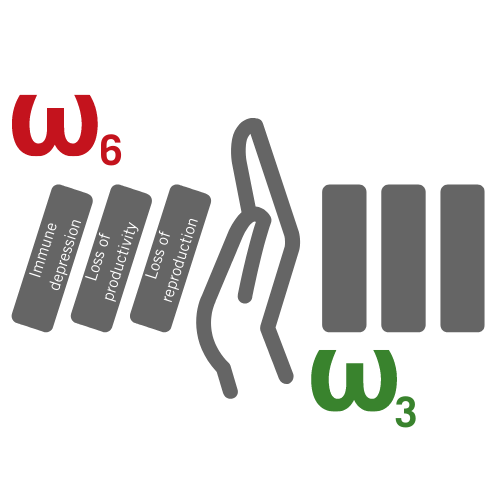
The importance of fatty acids in human nutrition first gained importance in the early 2000’s. Human nutritionists, dieticians and progressive producers/processors saw the need for value-added foods and supplements that provided a balanced omega solution. While the balanced fatty acid dietary progression has been slow, it has steadily gained momentum in the feed and food markets. Several progressive producer/processors in the egg market were the first to see the natural Omega-3 enrichment. Today markets like Omega-3 eggs, dairy and meats are the culmination of such a balanced dietary intake to the ω-6: ω-3 ratio. It starts with what we feed our livestock.
In broilers it has been found that by narrowing the dietary ω-6: ω-3 ratio from 30:1 to 5:1, there is improved growth performance as well as immune response. It also results in healthier chicken meat, enriched with long chain ω-3 poly-unsaturated fat[1]. A recent study published from the University of Guelph (Canada) indicates that feeding breeder layers with just 0.5% omega-3 fat (from 2.5% [inclusion] of linPRO, a dry-extruded flaxseed product) resulted in pullets entering the laying phase with a robust skeleton. The outcome is stronger eggshells, larger laying clusters and less culling due to skeletal issues.
In dairy cows, Penn State University Dr Troy Ott’s research with Omega-3’s (2016-2020), has shown the importance of maintaining proper energy and balanced fatty acids during the transition period. Such a balanced fatty acid feeding strategy has multiple benefits for dairy cows, including optimized immunity, productivity and reproductive functions[2].
In humans, improving the intake of ω-3 towards 1% of total energy intake can be beneficial for mitigating risk of cardiovascular disease. Additionally, a 1g incremental intake of α-linolenic acid (ALA) has been associated with 10% reduction in coronary heart disease related mortalities[3].
We cannot ignore that both omega-6 and omega-3 fats are essential for normal growth and development of livestock and human beings. Because ALA, an essential fatty acid, is both physiologically and metabolically distinct and cannot be synthesized in animals and humans’ bodies it needs to be consumed in dietary intake. It is important to account for the ratio of ω-6 to ω-3 fats when formulating diets to avoid potential negative effects.
Adequate dietary supplementation of livestock diets with novel and beneficial dietary supplements is gaining in importance as it significantly improves production and general performance of livestock and protects animals’ health.
Adding ω-3 to the livestock feed formula
Before considering any re-balancing of omega-3 feed formulas and observing benefits, it is crucial to incorporate fatty acid profiles of major ingredients in a feeding matrix and adding them as new dietary criteria in our feed software.
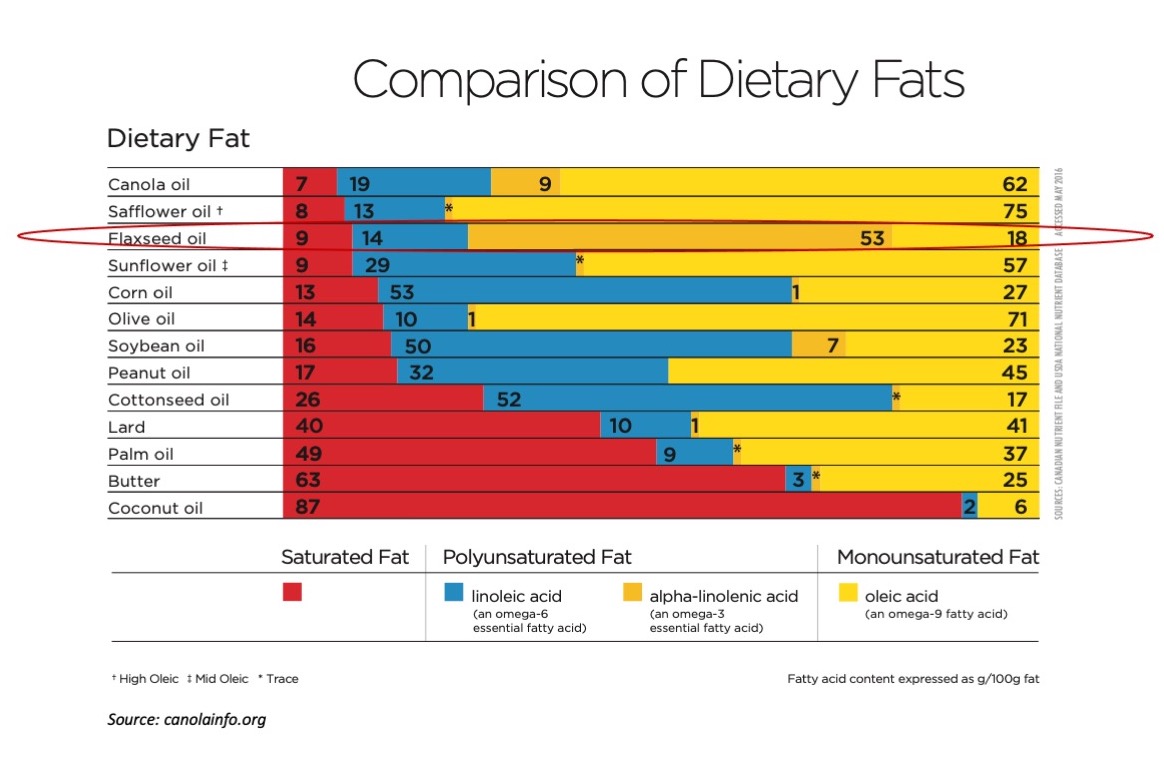
A small change in feed formulation can have a positive impact on the health of animals leading to measurable gain in productivity for the producer, while allowing a processor to market food that contributes to the human population’s health attributes. This is the ultimate domino effect (value-chain) for an integrated food company.
Healthy Feed – Healthy Animals – Healthy Food
 Balancing an animal’s diet to include dry-extruded flaxseed (linPRO) will result in changes to the fatty acid profile of the food and quantifiable changes in animals’ plasma fatty acids. Experience and studies show that feeding 5% dry-extruded flaxseed to livestock reduced their saturated fatty acids, correspondingly decreased the omega-6: omega-3 ratio and increased the total omega-3 fatty acids. This same study reported increased levels of omega-3 fatty acids by 54% in butter, 60% in meat and 186% in eggs[4]. In fact, the ability to enrich eggs, dairy or meats with an Omega-3 value has a linear effect. The more Omega-3 feed added to a livestock’s diet the greater the Omega-3 value in the food. Simply Effective, Simply Healthy!
Balancing an animal’s diet to include dry-extruded flaxseed (linPRO) will result in changes to the fatty acid profile of the food and quantifiable changes in animals’ plasma fatty acids. Experience and studies show that feeding 5% dry-extruded flaxseed to livestock reduced their saturated fatty acids, correspondingly decreased the omega-6: omega-3 ratio and increased the total omega-3 fatty acids. This same study reported increased levels of omega-3 fatty acids by 54% in butter, 60% in meat and 186% in eggs[4]. In fact, the ability to enrich eggs, dairy or meats with an Omega-3 value has a linear effect. The more Omega-3 feed added to a livestock’s diet the greater the Omega-3 value in the food. Simply Effective, Simply Healthy!
O&T Farm’s research on omega-3 fatty acids continues to show the health benefits of these dietary nutrients. The development of a cooperative agri-food reformulation strategy that focuses on livestock feeding practices, will also support the goals of human health organizations, while ultimately providing consumers with naturally enriched immunity foods. The goal as we progress forward should be to improve immunity response for livestock and humans alike.
[4] Annals of Nutrition and metabolism; 2002; 46(5): 182:91
Thanks to associate Helene Briand from BMC Groupe for contributions to this Newsletter.
